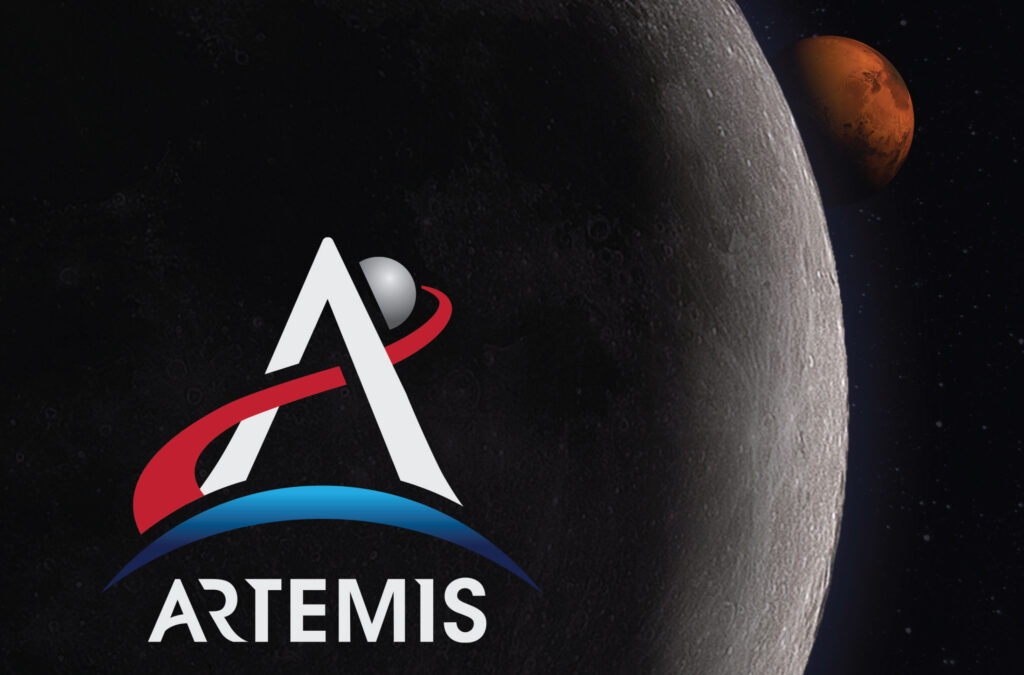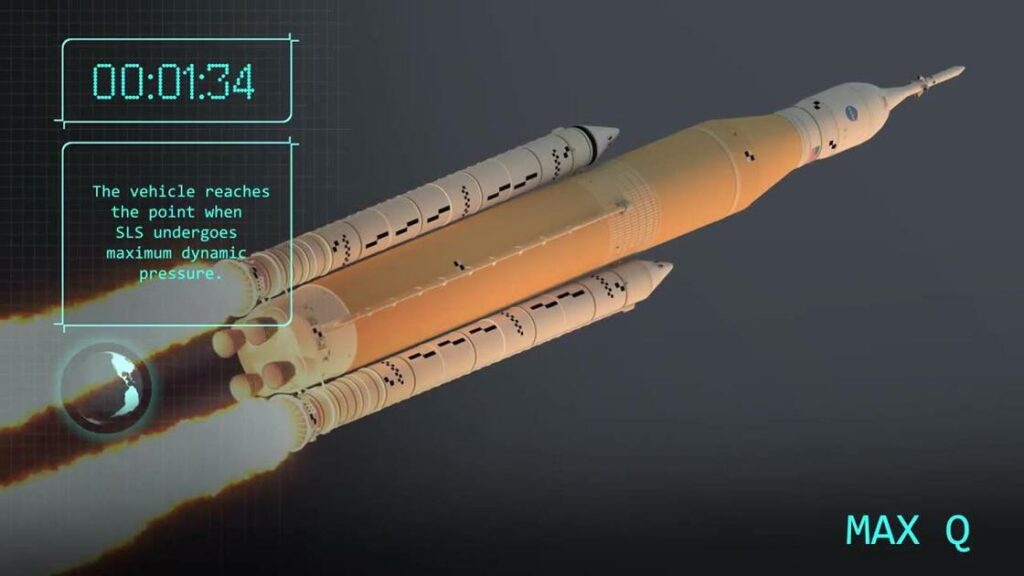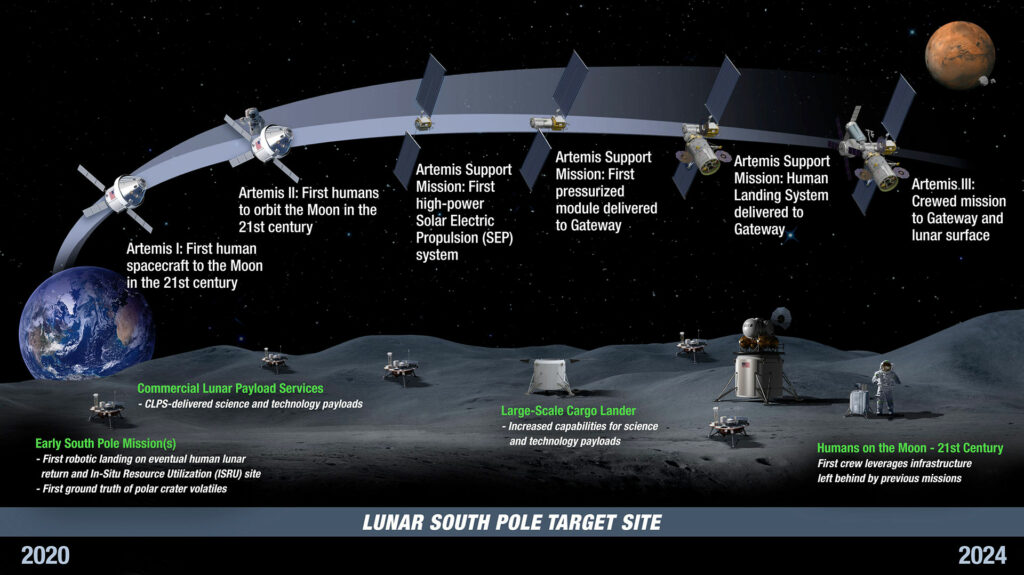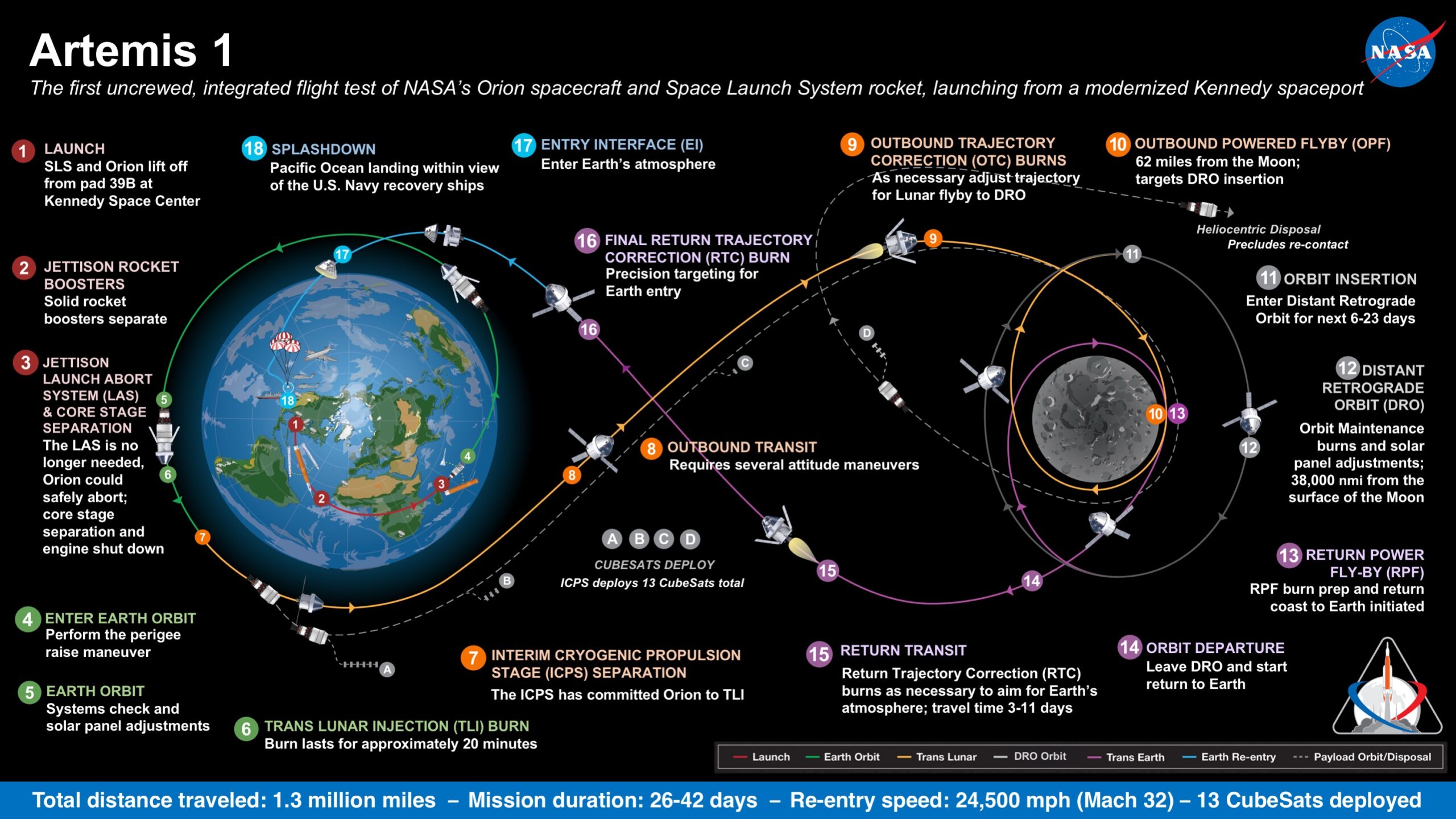The Artemis Mission
“We are going to the moon, to stay, by 2024,” NASA boldly exclaims in one of their newer video offerings on it’s NASA.gov website titled “We Are Going.” To go farther and create bases on other planets and moons NASA must be able to ferry heavier loads into outer space and create a launch platform infrastructure between the Earth and the Moon. We as humans must overcome radiation, isolation, gravity and extreme environments as we continue to explore space and build the technology to take us there. To this end NASA has created the Space Launch System, or SLS. SLS will be the most powerful rocket ever developed. It can carry more weight and ultimately more scientists and scientific equipment to orbit and the moon. NASA has also created a space capsule called the Orion capsule which will house astronauts through launch, through deep space and finally returning our astronauts and science payloads safely to Earth. Orion is NASA’s next generation human space capsule. Additionally a waypoint between the Earth and Moon will be built in orbit around the moon as a platform to transition between Earth and the moon. A place to host deep space experiments and act as go between for lunar landers and human capsules. This lunar outpost will be called Gateway. It can move between the Earth and the moon to give advantageous placement to further science and humanities deep space goals. Ultimately all these facilities and space ships will aid the human race in understanding the problems associated with humans in space and overcoming them to get us to Mars.

The moon is also prepared to help with oxygen for future scientists to breathe as well as being a primary ingredient in rocket fuel as there have been pockets of what is hoped to be water found on the moon. Hydrogen and oxygen could be isolated and saved through evolving processes. Through new processes and technologies new equipment will be able to extract the oxygen and hydrogen from existing ice zones deep in the shaded area’s of many of the Moons polar craters. Having air for out astronauts to breathe and fuel to return them to Earth are not conveniences, in this case they are being counted on as necessities. Humans needs the byproducts of water and the water itself to survive prolonged encounters in space. These will be absolute requirements if humanity is ever to have a chance at exploring our solar system and move beyond where we have gone before and open the next chapter of human space evolution.
Artemis is the first project that will engage the next era of human exploration of deep space, the moon, Mars and beyond. Working hand in hand with commercial and international partners NASA proposes to establish a green, clean and sustainable presence on the moon in preparation for missions to Mars. The Artemis program and NASA will land the first woman and next man on the Moon by 2024 by using innovative technologies to explore and map in higher resolution the surface of the moon than ever before. Then everything learned will be gathered to take the next giant leap, that of sending astronauts to Mars by the end of the decade. Several years in orbit around the moon and on the surface will build the operational confidence required for conducting long term scientific work and supporting life away for extended timeframes. This is absolutely essential for the integrity of the mission.

SLS, the Space Launch System and the Orion spacecraft are nearing the end of testing and development. The Orion spacecraft encompasses the Human Landing System and NASA seeks to use the Artemis missions to bolster additional testing of these components when possible. The Gateway is critical in all phases of testing and development and is required to keep the agency’s lunar operations sustainable. NASA will put together the first two pieces on Earth and then launch the Power and Propulsion Element (PPE) and Habitation and Logistics Output (HALO) together in 2023 on a single SLS rocket followed by a commercial logistics supply launch. 2024 is the date slated to deliver an actual crew to lunar orbit. If the commercially developed lander which interfaces with both the HALO and Orion works out as planned it will be used to transfer the crew directly to the Moon for early Artemis missions. This first planned moon landing is expected to last a week before the astronauts re-board the Orion capsule for the trip back to Earth. Later missions arriving at the Gateway via the Orion capsule will make trips down to the Moons surface. NASA will be working closely with international team of astronauts to assure international interoperability standards are maintained and reusable components are utilized for long termed sustainability on the moon.

Many long standing International Space Station partners are eager to join NASA in lunar orbit. The Canadian Space Agency has committed to providing robotics to the mission and the European Space Agency (ESA) plans to provide the International habitant (IHab) and the ESPRIT module for communications, airlock, and facilities for refueling of the gateway. JAXA (Japanese Aerospace Exploration Agency) has committed to habitation and logistics resupply and Russian Agency Roscosmos expressing keen interest in cooperation with the Gateway as well. Further partners will develop a base at the Lunar South Pole to support longer missions on the lunar surface. The Planned Base Camp will include a lunar terrain vehicle (LTV), a pressurized rover, lunar foundation habitation module, power systems and ad in situ resource utilization systems. Incremental build up of the base and it capabilities is essential in the long term planning and long term exploration of Earths nearest neighbor in preparation for that longer trip to Mars.
The Artemis Mission comprises many firsts, chapters and phases to be brought about over the next 4 years. With the Perseverance Mars rover landing on Mars in February of 2021 though having nothing to do with the Artemis Missions specifically the science gathered from the rover will help in the ongoing planning for missions to Mars. The Artemis mission will be doing its part to get us a crew to Mars as have so many other previous NASA missions. The missions truly build on each other. The Artemis mission itself has three main phases with important milestones and achievements to be made in between. This article just covers the most preliminary of information about the Artemis Missions and serves as a short introductory on some space exploration that is going on currently at NASA.
Next week I will break down the three main phases of the Artemis missions, Artemis I, Artemis II and Artemis III and additionally go over some further scientific instruments that are slated to be sent to the Moon such as VIPER, a car sized rover to be the first spacecraft to investigate the lunar pole and conduct soil samples to characterize the distribution and concentration of volatile elements in the moons geography including but not limited to water across vast areas of the moon. CAPSTONE CubeSat and PPE & HALO Launch will also be covered, with updates as their have been proposed changes to launch PPE and HALO separately.

Leave a Reply